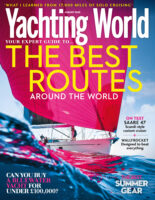Have race organisers and class authorities pushed the limits too far by relying on modern day communications to pick up the pieces?
Have race organisers and class authorities, those responsible for design rules, pushed the limits too far by relying on modern day communications to effectively pick up the pieces when things go wrong? According to a story on the official Volvo Ocean Race website that’s precisely what they’ve done.
In an article explaining the development of the VO class it was stated: “?to make full use of the latest in boat design developments, new materials, and most importantly, in the new communications technology now available, an even more extreme class of yacht would be needed to bring the true demands of the race to the public eye.” Well it’s certainly done that. Sadly for precisely for the wrong reasons.
The succession of events that unfolded within the first 24 hours of the race is the latest in a string of disasters that have occurred within many, recent high profile ocean races and there is no doubt that had it not been for GPS, EPIRB and Inmarsat there would have been more fatalities over the past few years. While high profile, grand prix ocean racing naturally carries inherent dangers, and those who take part are more than aware of the risks, it seems that there are now few events that take place that don’t have major incidents.
But it’s not just the VOR that’s causing concern right now, take for example the Transat Jacques Vabre which started just two weeks ago. In fact to watch the events of this race unfold and see the North Atlantic once again littered with upturned hulls and debris, there was a definite feeling of ‘Route du Rhum ground hog day’ where, two years on seemingly nothing has changed. Fortunately, thanks once again to the fantastic rescue operations, everyone survived. Big winds they may have been but the design and construction of the ORMA multihulls should, as their class title suggest (Ocean Racing Multihulls), surely be more than capable of coping with the sort of conditions thrown at them.
One doesn’t have to delve too deep either to remember the Vendee Globe which finished earlier this year. Here there were numerous problems with canting keel systems with two boats –Skandia and Ecover – losing their keels. The skipper of these boats were on this occasion fortunate enough prevent their boats from capsizing, but imagine the scenario had they been in a storm in the Southern Ocean thousands of miles away from any form of rescue?
Another relatively recent incident that springs to mind was during last winter’s Sydney Hobart Race where Grant Wharrington’s Skandia Wild lost her keel and the entire crew had to be rescued from the 98ft supermaxi.
While it’s comforting to know that in an emergency situation the chances of rescue is relatively high, the recent disastrous events highlighted by the TJV and VOR must surely be the wake-up call needed for race organising authorities to seriously consider reviewing the current safety issues.



